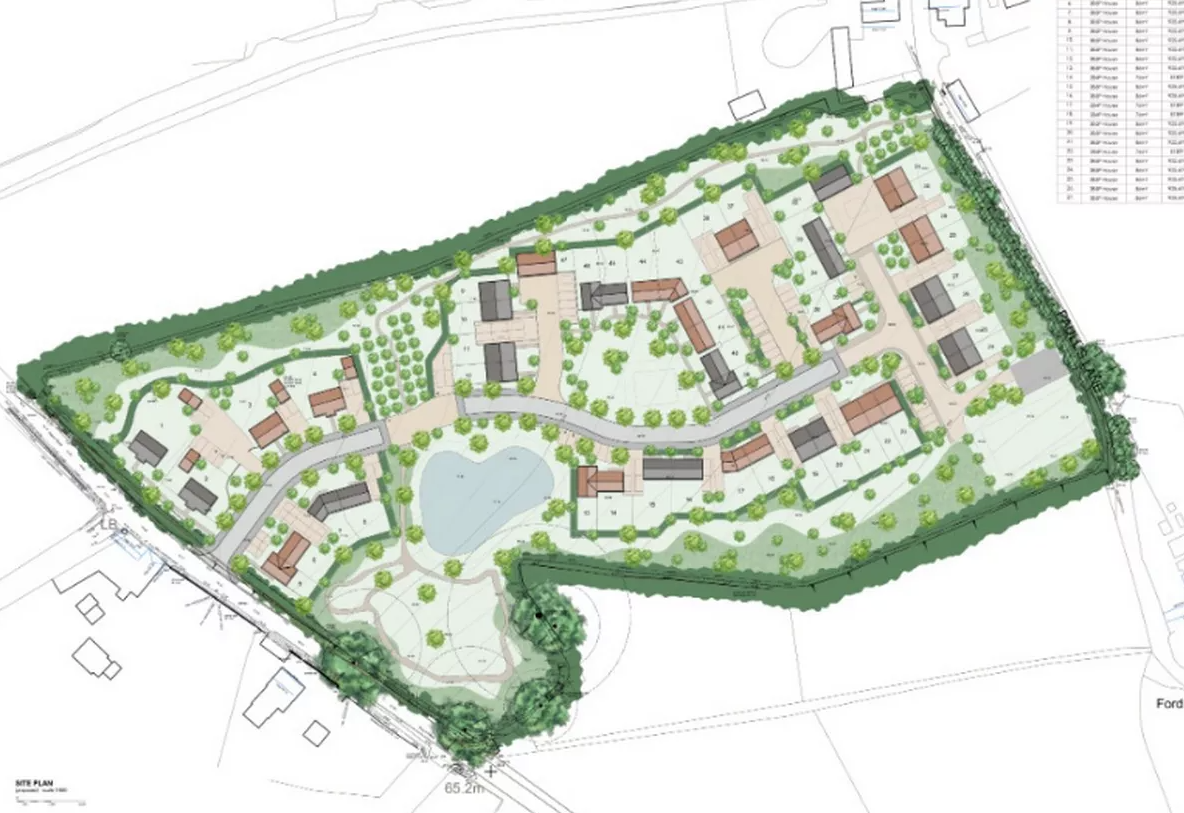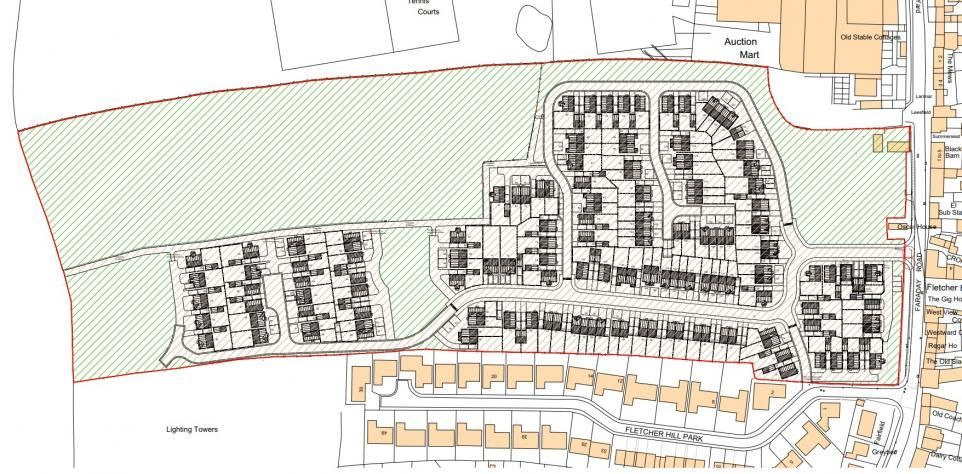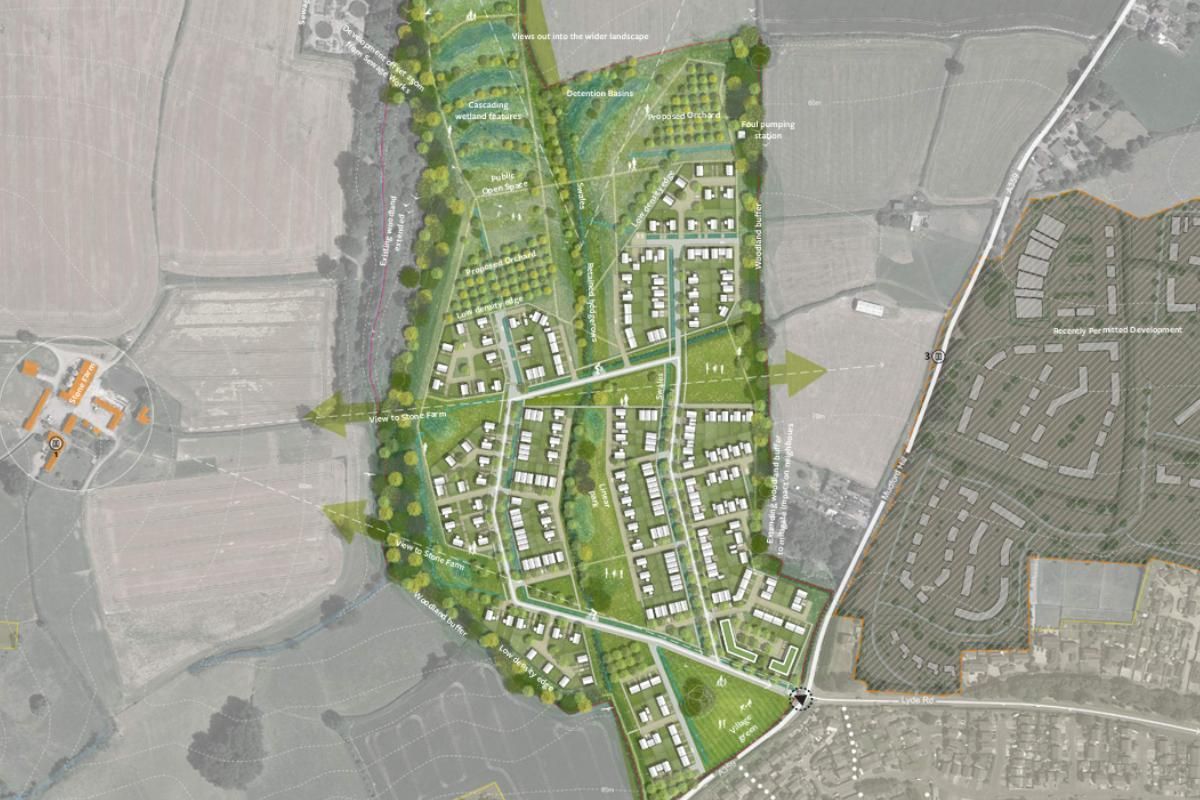CASE STUDIES
Pound Road, Broadway - Achieving Phosphorus Neutrality
Enviren successfully demonstrated that a residential scheme of 45 dwellings at Pound Road, Broadway could be delivered without increasing phosphorus loads to the sensitive Somerset Levels & Moors. Despite initial expectations that new foul and surface water flows would increase nutrient discharge, the project team identified that:
- The existing low-intensity grazing land already exported phosphorus.
- The proposed development footprint was tightly balanced between residential and greenspace land uses.
- A carefully selected SuDS treatment train, achieving 62% phosphorus removal, would offset the small increases in urban runoff.
The final nutrient budget shows a net improvement in phosphorus loading relative to the existing baseline, ensuring full compliance with Natural England’s nutrient neutrality requirements and removing the need for costly offsite land or constructed wetland mitigation.
Why Nutrient Neutrality Is Required
Natural England issued guidance stating that additional phosphorus from new development may adversely affect the Somerset Levels & Moors Ramsar Site, which is currently in an “unfavourable condition” due to excessive nutrient levels.
As a result, Local Planning Authorities must ensure that any proposed residential development does not increase phosphorus loading without mitigation.
Existing Site Conditions
The report shows:
- Former land use: Lowland grazing (3.129 ha)
Annual phosphorus export: –3.82 kg TP/year - Soil drainage type: Impeded
Annual rainfall: 900–950 mm
The baseline therefore generates a net phosphorus export, a favourable position for nutrient budgeting.
Proposed Development & SuDS Strategy
The development includes:
- 45 dwellings with foul connections to Broadway WRC
- Surface water managed entirely on-site via a SuDS treatment train including ponds and basins
SuDS Performance
The report uses CIRIA C808 removal efficiency values. A pond treatment train provides:
- 39% particulate P removal
- 23% dissolved P removal
- 62% total phosphorus removal efficiency
The report confirms that the SuDS are designed to manage both PP and DP, preventing bioavailable phosphorus from entering the receiving environment.

Nutrient Budget Calculations
Stage 1 – Wastewater Arisings
The annual foul-water phosphorus contribution is:
- +2.04 kg TP/year (Pre-LURA & Post-LURA)
CD4.14 - 10829 TN01 RV4 - Nutri…
Stage 2 – Existing Land Use
- –3.82 kg TP/year (export from lowland grazing)
CD4.14 - 10829 TN01 RV4 - Nutri…
Stage 3 – Proposed Land Use
- Residential Urban: 1.568 ha
- Green Space: 1.561 ha
- +2.93 kg TP/year export
SuDS Reduction
- –1.80 kg TP/year removed by SuDS
Final Nutrient Budget
The report’s Stage 4 summary concludes:
- Final phosphorus load (Pre-LURA): –0.64 kg TP/year
- Final phosphorus load (Post-LURA): –0.64 kg TP/year
This is a net reduction, meaning the site will export less phosphorus after development than it does today.
Conclusion
The report states unequivocally:
“The applicant shall achieve Nutrient Neutrality through the proposals and therefore nutrient arisings should not prevent planning approval being granted.”
Through the integration of a robust SuDS treatment train and the favourable baseline export from lowland grazing, the Pound Road site achieves a net reduction of 0.64 kg TP/year, requiring no offsite mitigation.
PROJECT DETAILS
CLIENT
Private Developer
LOCATION
Somerset
OFFICE
Bristol
COMPLETED
2025



